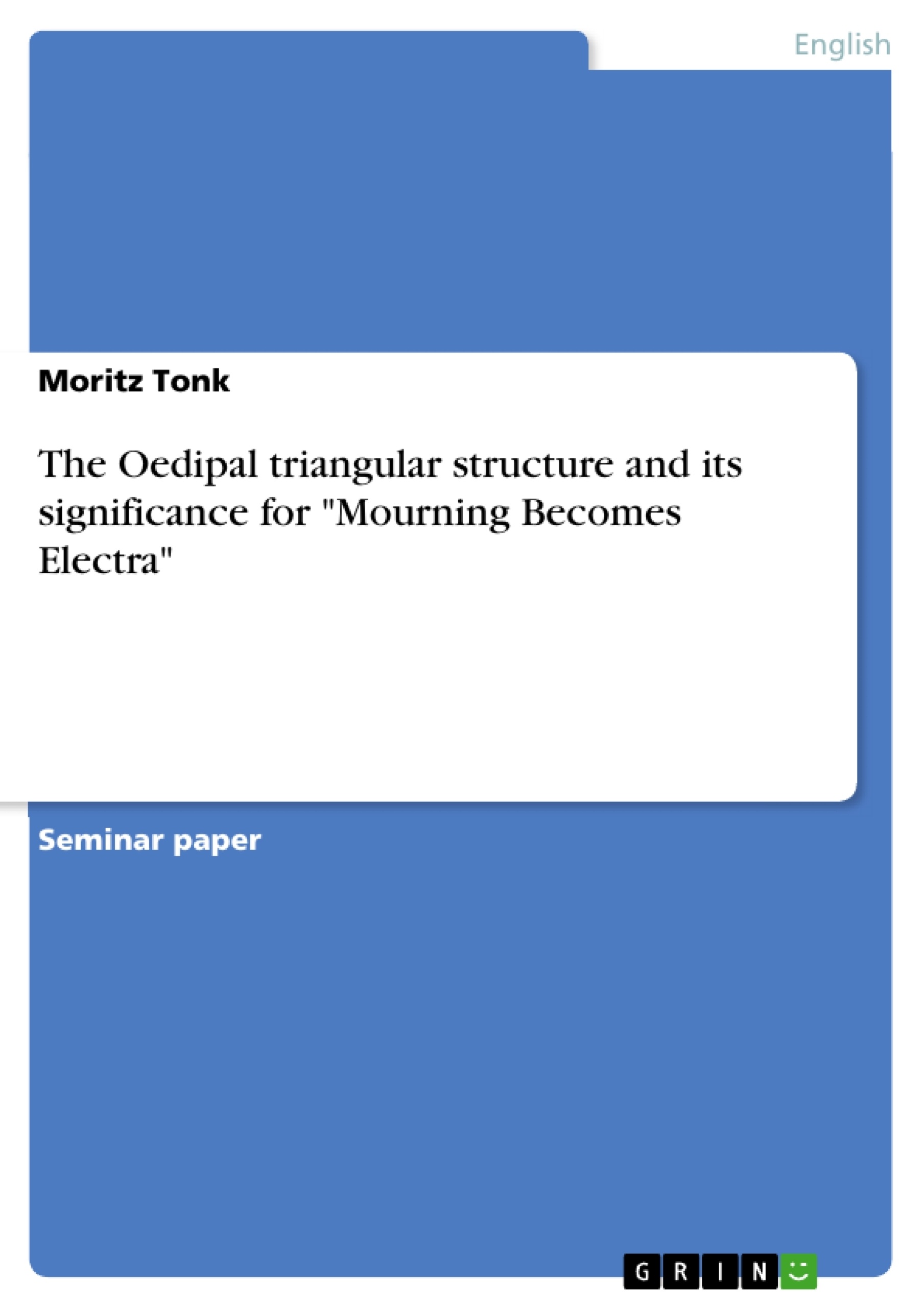Eine Hauptseminararbeit, die unter Berücksichtigung der psychoanalytischen Lesart des Freudschen Elektra-Komplexes das Drama Mourning Becomes Elektra untersucht, wobei versucht wird, die klassische Lesart durch eine differenziertere Analyse mit Hilfe einer Dreiecksbeziehung der verschiedenen Charaktere, zu überkommen.
Inhaltsverzeichnis (Table of Contents)
- I. Introduction: Freud and O'Neill so far.
- II. Freudian background of Mourning Becomes Electra
- III. The Oedipal triangles in Mourning Becomes Electra
- A) Ezra - Christine – Orin
- B) Ezra Christine - Vinnie.
- C) Ezra - Christine – Adam Brant.
- D) Adam Brant - Christine - Vinnie
- E) Adam Brant - Christine - Orin
- F) Vinnie - Peter - Orin
- IV. The Interconnecting of the Oedipal triangles
- V. Conclusion
Zielsetzung und Themenschwerpunkte (Objectives and Key Themes)
The paper aims to analyze the Oedipal triangles within Eugene O'Neill's play Mourning Becomes Electra and how these triangles contribute to the overall plot and character development. It will examine the Freudian and Jungian perspectives on the Oedipal complex and its application to the play, demonstrating how the interconnections between these triangles drive the narrative. The paper will focus on the complexities of family relationships and the destructive nature of repressed desires.
- The application of Freudian and Jungian psychoanalytic theory to O'Neill's Mourning Becomes Electra.
- The Oedipal triangle as a central driving force in the play's narrative.
- The exploration of family dynamics and the complexities of human relationships.
- The role of repressed desires and their impact on characters' actions and motivations.
- The intertwining of different Oedipal triangles and their collective effect on the overall plot.
Zusammenfassung der Kapitel (Chapter Summaries)
- I. Introduction: Freud and O'Neill so far. This chapter introduces the paper's focus on O'Neill's Mourning Becomes Electra and the significance of psychoanalytic interpretations. It discusses differing perspectives on the play's reliance on Freudian concepts and highlights the need for a more nuanced analysis of the play's interpersonal dynamics.
- II. Freudian background of Mourning becomes Electra. This chapter provides a background on the Oedipus complex as defined by Sigmund Freud and its connection to the play. It explores the differences between the Oedipus complex for boys and girls and the Electra complex proposed by Carl-Gustav Jung. It emphasizes the central concept of the Oedipal triangle and the unconscious incestuous desire that drives it.
- III. The Oedipal triangles in Mourning becomes Electra. This chapter delves into specific Oedipal triangles within the play, examining the relationships between Ezra, Christine, Orin, Vinnie, and Adam Brant. It analyzes how these triangles manifest in the play and how the characters' actions and interactions are shaped by their unconscious desires.
Schlüsselwörter (Keywords)
The main keywords and focus topics of the text include Mourning Becomes Electra, Eugene O'Neill, Oedipal complex, Freudian psychoanalysis, Jungian psychology, Electra complex, incestuous desire, family dynamics, character relationships, and the interplay of different Oedipal triangles.
- Quote paper
- Moritz Tonk (Author), 2010, The Oedipal triangular structure and its significance for "Mourning Becomes Electra", Munich, GRIN Verlag, https://www.grin.com/document/165744



